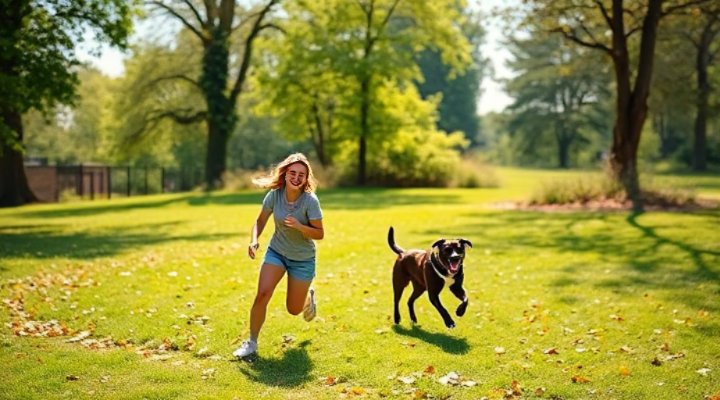Understanding your dog’s behavior is key to building a strong bond and ensuring their happiness. Dogs communicate through a variety of actions, and by learning to interpret these signals, you can respond appropriately to their needs.

Common Canine Behaviors and Their Meanings
Dogs use body language, vocalizations, and actions to express themselves. For example, a wagging tail doesn’t always mean happiness—it can also indicate excitement or even anxiety. Similarly, barking can signal anything from joy to alertness to distress.
One of my favorite memories is when my beagle, Max, would tilt his head whenever I asked if he wanted to go for a walk. That adorable head tilt was his way of showing curiosity and anticipation. According to the American Veterinary Medical Association, this behavior is common in dogs trying to better understand human speech.

Tail Wagging: More Than Just Happiness
While many people associate tail wagging with a happy dog, the truth is more nuanced. The position and speed of the wag can indicate different emotions:
- High, fast wagging: Excitement or arousal
- Low, slow wagging: Uncertainty or submission
- Stiff wagging: Alertness or potential aggression
If you’re struggling with interpreting your dog’s tail language, our article on 15 Simple Dog Tricks for Mental Stimulation can help you better understand your pet’s needs.

Understanding Submissive Behaviors
Submissive behaviors in dogs include rolling over to expose the belly, lowering the body, or avoiding eye contact. These actions are your dog’s way of showing they mean no harm and want to avoid conflict.
It’s important to recognize these signals, especially when introducing your dog to new people or animals. For more tips on socializing your dog, check out our guide on Socializing Dogs: How to Help Your Pet Get Along with Others.
Barking: Your Dog’s Vocal Communication
Barking serves many purposes in canine communication. Some common reasons include:
- Alerting to potential danger
- Expressing excitement
- Seeking attention
- Showing anxiety or fear
If your dog’s barking becomes excessive, our article on Dog Whining in Crate: Causes and Solutions might offer helpful insights.

Play Behavior and Bonding
Play is essential for your dog’s physical and mental health. Through play, dogs learn social skills, burn energy, and strengthen their bond with you. Common play behaviors include:
- Play bows (front end down, rear end up)
- Gentle mouthing
- Chasing games
- Bringing toys to share
The American Kennel Club emphasizes the importance of regular play sessions for maintaining a happy, well-adjusted dog.

Addressing Problem Behaviors
While most canine behaviors are normal, some may require attention. Common issues include:
- Excessive barking
- Jumping on people
- Chewing inappropriate items
- Separation anxiety
For help with jumping behavior, our step-by-step guide on How to Teach Dog Not to Jump provides practical solutions.
Building a Stronger Bond Through Understanding
By taking the time to understand your dog’s behavior, you’ll create a deeper connection and be better equipped to meet their needs. Remember that every dog is unique, and what works for one may not work for another.
For more insights into canine behavior and training, explore our Complete Guide to Dog Training Tricks.
Related Keywords: dog body language, canine communication, understanding dog behavior, dog training tips, pet behavior solutions

